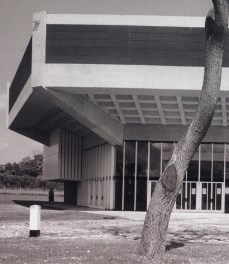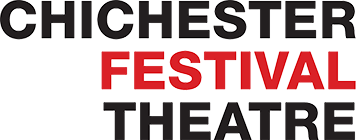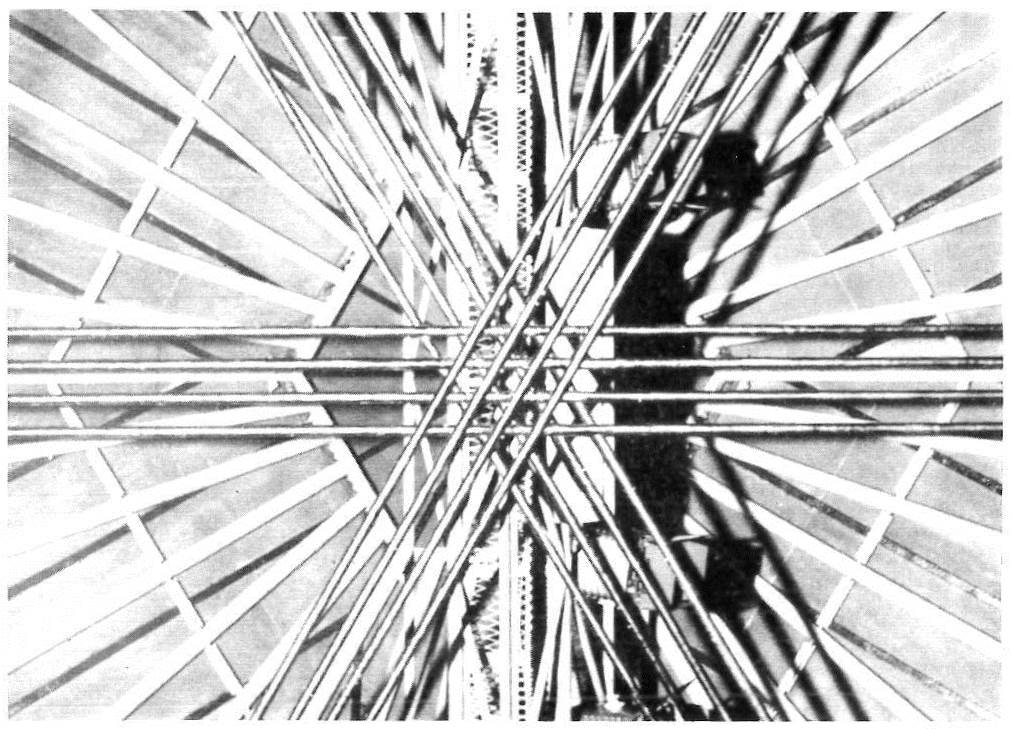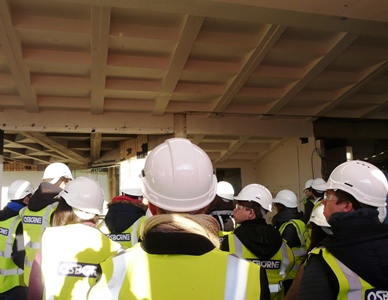
One of the key characteristics of Modernist architecture concerns the concept known as ‘form follows function’; a phrase termed by the influential Modernist architect Louis Sullivan.
‘Form follows function’ essentially relates to a strict design point of view, which says that the purpose of the building must be considered first, and how a building looks should be led only by this consideration. As a result the building’s form will express its function.
This principle can clearly be seen in many parts of Chichester Festival Theatre:
When designing the auditorium the architects knew they had to arrange a certain number of seats around a Thrust stage. They started with a large circle (the auditorium) with a smaller circle inside it, pushed against one side (the stage), and worked from there. They soon decided a hexagonal auditorium would make for better acoustics and would be much cheaper to construct. The demand that the principle part of the building be hexagonal radiates to the external façade of the Theatre in the finished building. The large concrete shell containing the auditorium is left exposed, reflecting the tiered seating inside as it dictates the form of the whole building. Cradled by the cantilevering columns above the foyer space, the auditorium projects out into the park, making a real statement to those visiting the Theatre while showing the building’s internal functions.

You can also see how this building functions structurally as all key structural elements are uncovered. These are the six concrete columns, the two concrete ring beams, the concrete auditorium shell and the high tensile steel rods which run just below the rigging inside the auditorium. All of these elements work in harmony to maintain the structural integrity of the building and not only can be plainly seen, but contribute to the visual effect of the whole building.
The opposite method of the ‘form follows function’ design approach is function follows form, whereby the form or shape of the building dictates the design process of the building. In other words the building is solely driven by the form, which is then used to insert the functions of the building. Prime examples of this design approach can be seen in the works of architects such as Frank Gehry and Zaha Hadid.
Find out more about the architects
Discover the incredible feet of engineering that is the Festival Theater’s roof





